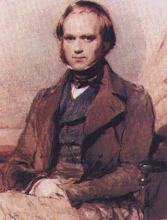
Astronomers estimate that the sun was up to 30% dimmer early in its history (before its internal fusion engine was up to full power), and as a consequence put out less heat. Therefore, any water on the young Earth should have been frozen.
However, rocks formed during this period of Earth history, the Archean Eon, about 3.8-2.5 billion years ago, give evidence of deposition in liquid water. This discrepancy has been called the “faint young sun paradox”.
Now there is a new explanation for a warmer-than-expected early earth: Continents were smaller and more of the surface of the Earth was covered by ocean, giving the early Earth a darker, less-reflective surface, or low albedo.
Accordingly, the Earth’s surface absorbed more of the sun’s energy than it would have with a more reflective surface, enough to keep its oceans liquid, and keeping the planet hospitable for the development of early lifeforms.
Source: Rosing, Minik T.; Bird, Dennis K.; Sleep, Norman H.; Bjerrum, Christian J., 2010, No climate paradox under the faint early Sun. Nature 464: 744–747. Also reported in Science News April 24, 2010.
Photo credit and more info on the "faint young sun paradox": http://www.astrosociety.org/pubs/mercury/35_06/paradox.html


No comments:
Post a Comment